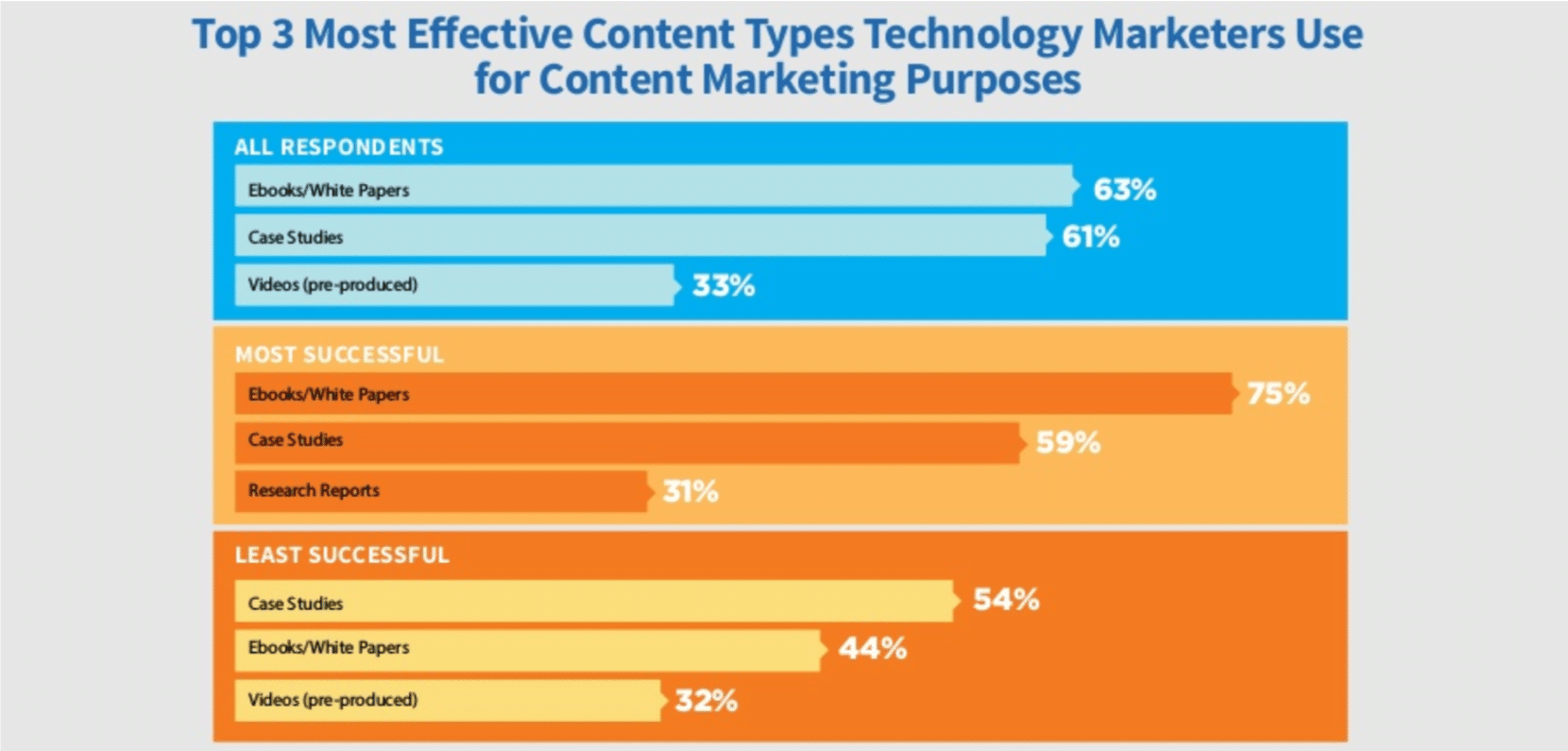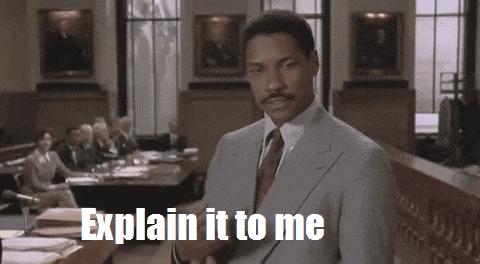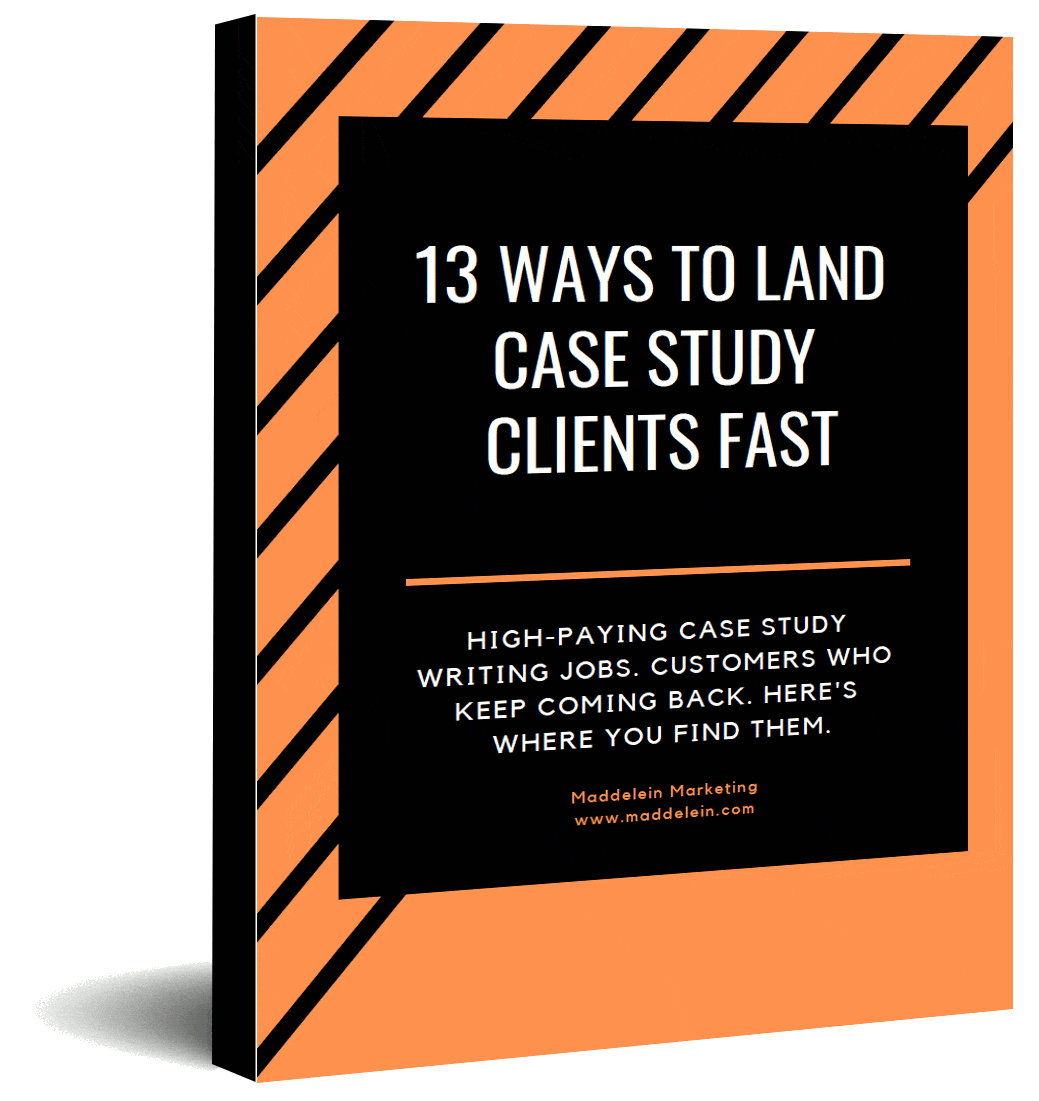“So, what do you do?”
It’s probably the most frequently asked question at network receptions and parties. When I tell people I’m a copywriter, I often see their eyes glaze over.
But then I try:
“I write content for businesses.”
More...
Oh yeah, now they understand. A copywriter is like this guy in Mad Men who sips whiskey all day and keeps himself busy coming up with slogans.

Well, not really.
Now, there are two possibilities. Either I head to the bar again, or I explain to them that I write stuff for B2B and technology companies. And that one of the things I write most often are case studies.
I probably wrote my first case study 15 years ago, as an in-house copywriter. Apparently, it’s one of those content types that never go out of style.
I still write case studies today as an independent copywriter, although I have gotten a bit better, a bit more strategic and a bit more efficient at it.
Here are seven things I have learned in 15 years of case study writing.
1/ Everyone and their mother wants case studies
Airbnb, TripAdvisor, Amazon… we check reviews for almost everything we buy nowadays. Not so long ago, my 7-year old daughter needed Mickey Mouse ears for a Carnival party. I ordered them online, and yes, I checked the reviews to see whether the 5-euro ear set was worth my investment.
Now imagine a guy in the purchasing department of a typical SME, looking into buying a cloud-based ERP software solution of € 500,000. How does he decide what’s right?
There is the price of course, the technical specifications, the software provider’s brand image. But another important factor are the experiences of previous buyers.
We need social proof.
We need someone else to tell us that we are making the right buying decision. And that’s exactly what case studies do.
Case studies have a know/like/trust factor that very few other marketing tools can provide. A case study not only educates people about a solution, it also gives a company more credibility.
Especially for B2B companies, where products and services are often complex, case studies are the perfect tool to nudge prospects deeper into the sales funnel.
I’m not saying this. All the big guys say this, the Content Marketing Institute (CMI) to name just one.

2/ Case studies are hardly sexy
Back to the network party.
Talk to people about conversion, funnels, marketing automation, and you draw attention at the dinner table. Mention case studies, and all you see are puzzled faces.
Why is that?
Although year after year organizations like the Content Marketing Institute say that it’s a good idea to invest in case studies, people are hardly excited by it.
And then there’s this graphic, also from a CMI report:

Let’s see if I understand this correctly.
Although 59% of technology marketers think case studies are the second most effective tactic, 54% of respondents think it’s the least successful tactic.

Maybe it’s because case studies are old school.
Maybe it’s because case studies are so formulaic sometimes.
Or maybe it has something to do with my next finding.
3/ Writing a case study is easy, until it’s not
A case study has three parts: before, during and after. So, how hard can it be?
Well, I hate to spoil the party, my friend, but there are many ways to screw up a good customer story.
Yes, there is the writing, but you will also have to:
- Get the information you want out of your customer
- Develop a story that pulls your reader in
- Endure endless correction rounds
- Obtain story approval
Case study writing is a form of storytelling (nah, I said it). And like any novel writer or Hollywood director will tell you: you might know the components of a good story, but actually mixing it all up into something interesting is a whole different game.
4/ Writing a case study is the best way to get to know your customer
As marketers, it is our job to know the worries and needs of our customers, right? But how can we do that when we’re behind our desks all day?
Interviewing a customer for a case study allows you to get away from your desk, into the field.
Sometimes, interviews can be very revealing. It might just be that your customer picked your product for a totally different reason than you thought: you might have thought it was because of your latest widget, while it was actually your customer support that sweetened the deal.
5/ Nothing beats talking to someone face to face
I can’t count the many Skype-like tools we have available nowadays to connect with customers online. And I am still doing my fair share of phone interviews. But nothing beats meeting people face to face.
Meeting people in the real world, not the online one, might take more effort, but it definitely pays off.
Why?
For starters, you will get more and better information out of your interviewee when you meet in person. You can capture so many more non-verbal cues and emotions with your interviewee that would otherwise go unnoticed over the phone and even via Skype.
Although organizations do not always have the time and budget to go on site, meeting face to face trumps phone and online interviews by far.
Case studies require your customer to invest time and effort. When you show up physically and the customer has seen your face, he will be more willing to make that investment. And when it’s time to ask for a final story sign-off, the interviewee will be more willing to provide that, because you have already built a personal rapport.
6/ Case study writing is fun
Apart from all the obvious marketing advantages, case study writing can be fun.
To be honest, I will choose writing a case study over a brochure or blog article any time. Maybe it’s the journalist in me, but I have always liked the storytelling side of copywriting.
Another side benefit of case study writing is that they allow you to travel occasionally. You might visit places that you would normally never see as a regular tourist.
For example, for my case study work, I have:
- Made a video success story about traffic cameras in Rion-Antirion, Greece
- Seen how you need to protect an oil refinery from intruders in Burgas, Bulgaria
- Interviewed operations managers from waste-to-energy plants in Jönköping, Sweden
- Visited one of the biggest European agribusiness shows in Paris
- Reported on the performance of video walls in Lisbon’s amazing REFER control center
- Worked on application stories with customers from India, China, the US and the UK

Me, pretending to be an Iberia Air Traffic Manager during a case study photoshoot in Madrid, Spain
7/ Case study writing is a big opportunity for freelance writers
I should know, because I am one.

In fact, a few years ago, case studies enabled me to make the leap from a moonlighting freelancer to having a full-time copywriting business.
However unsexy they might be, I still believe that case studies are one of the best investments B2B companies can make.
Why?
- B2B companies will always need content to provide social proof and to shorten the sales cycle (see #1).
- “But we need more content” is probably the most heard concern from marketing managers the last ten years or so. With case studies, you never run out of fresh content. Assuming you have happy customers of course.
- Now more than ever, marketing people and board rooms pay attention to their company’s brand story. Customer case studies are an essential part of that story.
Are you a B2B marketer? Then let me know how case studies are helping your business.
Are you a freelance writer? And are you interested to know more about case study writing? Then check out the free eBook below.
free eBook: 13 ways to land case study clients fast
Discover 13 actionable steps you can take this week to get your first case study writing jobs.


